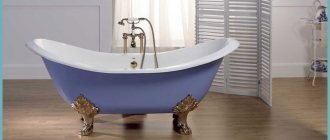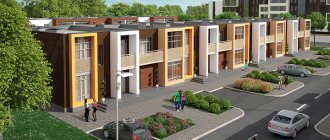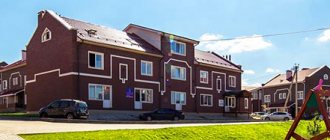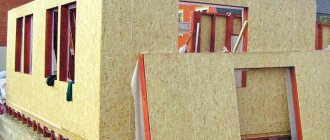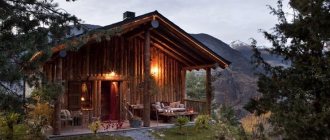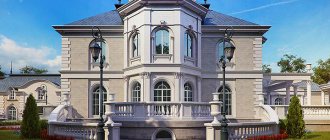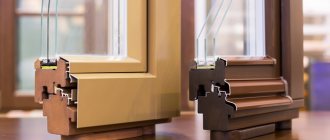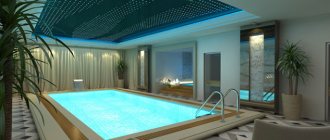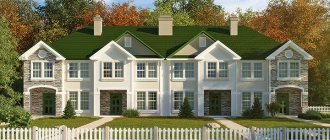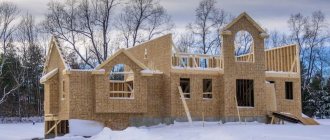When buyers think about purchasing or building their own home, they often wonder what material it should be built from. And, despite the huge variety of options on the modern construction market, owners most often opt for two materials: stone and wood.
In this article we will compare the characteristics of both options, consider the features and differences between stone and wooden country houses, what advantages and disadvantages they have.
Features and advantages of stone houses
Long service life and wear resistance of the material
Since ancient times, brick houses have been favorably distinguished by their stable quality, since they were erected only by professional builders, and they were owned mainly by wealthy people.
The same applies to the main building material - brick. Over time, its properties have been improved so much through new technologies and experiments that this material has become an almost indispensable element for the walls of any home.
Additional thermal insulation of buildings
Additionally, you can ensure maximum heat retention in the house by using external insulation by building a ventilated façade. The essence of this is to place profiles on the walls on which the finishing material will be fixed, depending on the tastes of the owner.
Various insulation is placed in the resulting space. Most often used:
- Styrofoam;
- Mineral wool;
- Expanded polystyrene;
- Ecowool, glass wool.
The list is not complete; the variety of products for insulating buildings on the market is very wide. First of all, they are subject to requirements for non-flammability, durability and environmental friendliness for residents.
When building such external insulated facades, you need to carefully consider the ventilation system. If this requirement is not met or not fulfilled fully enough, then fungus and mold may appear on the walls, which will ultimately lead to the process of rotting and loss of properties of any insulating material.
Advantages and disadvantages of a country house made of wood
For creative connoisseurs of handmade goods, confident that not only themselves but also their neighbors will appreciate it, a cottage built of wood is ideal.
The obvious advantage of this material is its affordable price and useful properties, which will be appreciated by lovers of environmentally friendly living away from the “polluted millionaire”.
Buyers also note the low thermal conductivity of wooden walls: you quickly warm up inside them in cold weather and do not “puff up” from the heat in the summer sun.
In addition, due to the lightness of wood, it becomes possible to significantly save on foundation construction. And “breathing” wood, if the initial conditions of its processing are good, will not allow the house to become damp.
What materials are walls made of best to retain heat in winter?
Tree
Not so long ago, the most common material in construction was natural wood. All the village houses, even in harsh winter conditions, made it possible to live in them quite comfortably and not freeze.
In addition, a big advantage of building buildings from solid wood is that there is no need to carry out finishing work on the outside, and even on the inside it is minimal.
At the moment, the construction of houses from logs has faded into the background; frame and timber houses have become more common.
For our climate zone, it is recommended to insulate them with at least a small layer of insulation, especially for cottages made of timber. The thermal conductivity of wood is quite low - 0.10-0.15 W/(M*k).
The advantages of such buildings are the following qualities:
- The total weight of the house is relatively small; you can get by with a simple foundation;
- They say about wooden cottages that they “breathe” and this is true. The well-being of people living in them is much better;
- A wooden structure with a wall thickness of 20 cm can retain more heat than a brick wall with a thickness of 50 cm;
- It is possible to dismantle and move the building to a new location (which, however, is very labor-intensive);
- The facility can be built by a team of 3-4 people in a couple of months.
The disadvantages of wooden buildings are also significant:
- The house continues to shrink for up to three years, but you can live 5-6 months after construction;
- The most significant disadvantage is that wooden buildings are very flammable. When staying, it is imperative to observe fire safety measures and treat the walls with special compounds;
- Insects are also enemies of such buildings, especially bark beetles. Modern industry produces various mixtures for wall treatment. This is a fairly important condition for maintaining the integrity of the building for a long period of time;
- It is necessary to ensure sufficient ventilation of the walls, otherwise the process of rotting and mold formation may begin.
Brick
Probably, we can safely put it in second place among building materials; literally 20-25 years ago there was no worthy alternative to it at all.
Brick houses themselves are very warm, since brick has a thermal conductivity coefficient of 0.47-0.70 W/(M*k). For the European winter, this is an ideal option, but this coefficient is not enough to maintain a comfortable temperature in the northern regions, and heat loss through the cement mortar is twice as large.
For greater heat retention in brick houses, an insulating layer of foam boards or other similar materials is installed on the outside and finished with siding. Although, with sufficiently thick external walls and a properly selected heating system, you can do without this.
Advantages of using bricks in construction:
- Houses built in compliance with all standards are very strong and durable. The service life can reach several hundred years;
- They tolerate any aggressive environment well - snow, wind, temperature changes. Major repairs are not required for up to 150 years;
- Environmentally friendly building material. All components do not contain chemicals harmful to human health;
- Fire resistant, brick is not flammable, on the contrary, it even acquires additional strength during the firing process;
- Good sound insulation. Thick walls reliably protect against noise from the street, and household inhabitants do not interfere with each other listening to music or watching TV.
Like all other materials, brick has its disadvantages:
- High cost of construction work. You need a large amount of additional materials for masonry - mortar, mesh, lintels, etc.;
- The construction period of a house is much longer than, for example, from wood or aerated blocks, since the overall dimensions of the brick are much smaller;
- A team of 8-10 people is required to build a medium-sized cottage, which means additional wage costs;
- Due to the considerable weight, you need to take care of a reliable foundation in advance.
Foam block
Foam blocks (or gas blocks) have recently become widespread in Russia. They have the correct geometry, are light weight, and are manufactured with a hook, which makes installation easier.
In addition, foam blocks are inexpensive, and due to their large dimensions they allow construction to be carried out at a rapid pace. Due to the content of a large number of air bubbles in their structure, their thermal conductivity is in the range of 0.08-0.0 W/(M*k).
The downside of the material is its ability to absorb water, which negatively affects operation. Therefore, it is recommended to cover the outside of such houses, albeit not immediately, but within several years, with insulation and cover them with siding. Otherwise, loss of heat-retaining properties will occur within 5-7 years from the date of construction.
Let's summarize a little, so, the advantages of building from foam blocks:
- A team of 2-3 people will build a box house in a short time;
- Exterior finishing can be done in various ways, including inexpensive ones;
- Lightweight blocks, no expensive lifting equipment required;
- The blocks are assembled using an adhesive mixture, which is much more reliable than cement;
- Inexpensive and practical material, available even in the suburbs, delivery costs will not be expensive.
The disadvantages of this material are the following:
- The heat resistance of the material is even lower than that of wood and brick. Therefore, for buildings made of foam and gas blocks, it is important to have constant heating, otherwise the cottage will freeze quickly enough;
- After the house has cooled down, it will warm up for at least 8-10 hours, depending on the area of the building;
- Blocks, without good insulation from the external environment, constantly absorb water, and at subzero temperatures this water freezes, turns into ice and expands. This affects the safety of the material;
- During operation of 25-30 years, major repairs are most often required.
Frame and panel structures
They also became widespread in our country relatively recently. The advantage of frame cottages and dachas is the low cost of construction and fast construction time.
The essence of the technology is that to build a frame house, a wooden frame is built according to a specific design, then it is sheathed with panels, and several layers of insulation are laid between them.
As a rule, it is enough to retain heat until it loses its beneficial properties, this happens after 9-10 years of operation. To restore the thermal conductivity of the walls, they can be insulated from the outside and finished with siding.
According to the legislation in our country, heat loss at home must be within 0.02 W/(M*k). In “frameworks” this is achieved in the vast majority of cases by external insulation of the walls. This type of insulation allows you to save the internal space of the building, as well as achieve a more aesthetic and individual appearance.
Let's consider the positive aspects of frame structures:
- Low cost of building a cottage, a minimum of expensive materials are required;
- A team of 5 people is able to build a turnkey cottage in 1-3 months, depending on the complexity of the project;
- Construction work can be carried out at any time of the year;
- Possibility of installing communications inside the walls, which is much more aesthetically pleasing and makes their repair easier;
- Does not require a strong and powerful foundation;
- There is no shrinkage process, the house will remain as it was at the time of construction;
- The walls are perfectly smooth, which significantly saves finishing materials.
The disadvantages of these designs are as follows:
- Poor sound insulation, as the walls are not particularly thick;
- There is no possibility of redevelopment of the interior premises, since the project was created as a single whole;
- The need to replace the insulation, which, depending on the brand, needs to be changed after 10-30 years of operation. An alternative to this could be external wall insulation and covering with additional siding;
- The load-bearing capacity of the walls is limited. If you plan to hang something massive and heavy, you need to consider strengthening the required area in advance.
Folk tales
Superstitions and beliefs circulate among the people. For example, it is believed that it is better to prepare firewood for a bath during the waning moon. Moreover, the thinner the sickle, the stronger the logs are endowed with healing powers. Once upon a time, the Slavs believed that people who left the world turned into maples in their lives. The appearance of its leaves is akin to open palms, and its branches represent hands raised to the heavens. For this reason, they never fired maple stoves.
In the old days, residents of the Tambov province heated their stoves exclusively with apple trees to keep the house warm throughout the winter, including especially frosty days. Whether to believe all this or not is everyone’s business, but what happened was what happened. What do you, dear readers, think: what kind of firewood is better for a stove, bathhouse or fireplace?
Alder - a royal gift
If you want to feel like a member of the royal family, you should get hold of some alder logs, because it’s not for nothing that they are popularly called royal logs. They flare up quickly, emit a huge amount of heat, and produce virtually no smoke, which also eliminates the appearance of soot and soot. In addition, logs burn for a very long time. That is, the question of what kind of wood is best to heat the stove in the house has already been resolved!
But the main highlight is the unique aroma, which has a healing effect. It has long been accepted that if you heat a bathhouse using alder wood, you can forget about colds once and for all. Moreover, even in ancient times, it was alder logs that were put into the royal furnaces, as well as the fireboxes of other estates of rich peasants or nobles.
A fresh cut of alder has a red-orange hue, giving the woodpile an unusual and bright appearance. However, there is one interesting feature that everyone should know about. All the benefits described apply to trees that grew in dry areas. If the plants bloomed in the swamp, then there will be soot and unbearable heat.
Alder is especially popular among those who like to smoke meat or fish. Under normal conditions, wood dries quickly, and it retains its healing natural properties for 3 years.
This is important to know!
Regardless of the type of trees that will be used for firewood, you need to know about some features:
- Deadlines. Of course, those logs that have already served their “allotted” time will also burn (provided that they are dry and there is no mold on them). However, most trees retain their aroma only for two years. Alder and aspen are a pleasant exception in this regard - 3 years.
- Everything has its time. In winter, the humidity of trees is at a minimum level. In this regard, the preparation of firewood must be done during this period. Drying usually takes about 12 months. However, the timing depends on the type of forest, harvesting time, storage conditions and a number of other factors. In this case, the duration may increase significantly or, conversely, decrease.
- Dimensions. Which firewood is more profitable? Of course, those with optimal sizes. And these are 40-50 cm in length and 8-10 cm in thickness. This is how they are convenient to store and are suitable for any firebox.
- Rot. Under no circumstances should you use rotten firewood. Keeping logs on the ground for a long time results in the accumulation of toxic substances released during combustion, which is not beneficial to humans. For this reason, when cutting down branches, you should immediately take the correct measures to store them. When choosing raw materials for heating among dead wood, you should not take into account long-fallen branches.
- Storage issues. Logs should be laid with the bark facing up. This will protect the firewood from accidentally entering moisture, which evaporates faster from the surface of the bark. And if you show your imagination, you can build an original woodpile to the delight and surprise of your guests.
As can be seen from this material, it is not enough to know which firewood is best for the stove. It is equally important to ensure that they are stored correctly.
Regarding the arrangement of a woodpile, you can always come up with a lot of different ideas: from the most creative and crazy to the simplest to implement.
Video description
See the video for what improper storage leads to:
For fireplaces and pyrolysis stoves, it is advisable to further dry the fuel by keeping it in a warm and dry place for several days. The “cleaning” firewood – aspen and alder, used for cleaning chimneys – should also be well dried.
It is advisable to harvest oak in advance and put it into use after a year or two - this is the time it takes for the wood to dry. Birch, on the contrary, is used in the year of purchase. Linden is stored for no longer than 2-3 years if you want to enjoy its amazing aroma in the bathhouse.
Light willow logs
If you come across willow firewood in your field of vision, you shouldn’t refuse them. The heat from them is great, the flame is even, and in addition there is no soot. The only drawback is that they burn out too quickly. However, this can easily be compensated for if there are a sufficient number of willow trees in the area where you live. Many landscaping companies don't give them much time to develop. Old trunks are cut down, and branches are removed from still young trees. So you shouldn’t miss any opportunity to profit from such fuel for your home, bathhouse or fireplace.
Aspen – cleaning firewood
Aspen also takes a long time to light and burns out quickly. Therefore, you should not use such firewood to heat the stove, as they say, “from scratch.” At the same time, the flames are long and bright. There are also some other valuable properties. In addition to the fact that firewood itself does not form soot, it is able to remove carbon deposits formed from other logs. At the same time, when compared with birch firewood, aspen logs produce much less heat when burned.
But they can be used to “clean” the chimney. For this purpose, it is recommended to add several aspen firewood at the final stage of the firebox. And the chimney will be “cleaned”. Although they themselves do not produce heat, they are able to maintain heat for a long time.
Softwood firewood: pine, spruce, larch
By the characteristic crackling of the logs, which literally caresses the ear, and the bright scattering sparks, you can determine the combustion of pine logs. They give off a lot of heat, but burn out quite quickly. But many shortcomings are quickly forgotten thanks to the unique resinous aroma that comes from burning pine or spruce firewood. Only in this case you should be extremely vigilant, since sparks shooting out from time to time can cause a lot of trouble. Therefore, it is necessary to observe safety precautions.
It is worth noting that pine logs produce more heat than spruce logs. Largely due to the high content of resinous substances, due to which the above-mentioned aroma is released. Pine and spruce, it produces an equally invigorating effect. In addition, it can have a tonic effect on the organs of the upper respiratory tract. In addition, spruce logs have a “shooting” effect, while pine firewood has a smoke effect. But the wood of both species splits and melts easily, although it smokes heavily.
As for larch, rarely does anyone light a firebox with such wood due to its low prevalence. It should be taken into account that when logs burn, carbon monoxide is released in large quantities. For this reason, you should not immediately close the damper, and your country house or country cottage should have high-quality ventilation.
Basic storage rules
In order to heat the room efficiently, it must be properly prepared and crushed. It is advisable to dry in a dry, well-ventilated place. After which you need to grind the rock, which will simplify storage and drying.
There are several methods of installation, and the choice of a particular one depends on the existing woodpile, which is organized in an open space. It is advisable to build on a hill so that water does not accumulate when it rains. A prerequisite is the presence of sunlight.
What type of firewood is best to choose for the stove to ensure a hot enough fire. You need to focus on the type of oven. Lighting a fireplace with coniferous varieties is an extremely bad idea because of the smoke. The downside to choosing the wrong varieties is that it leads to clogging of the chimney.
Average score of ratings is more than 0
Share link
Comments There are no comments yet, but you could be the first...
